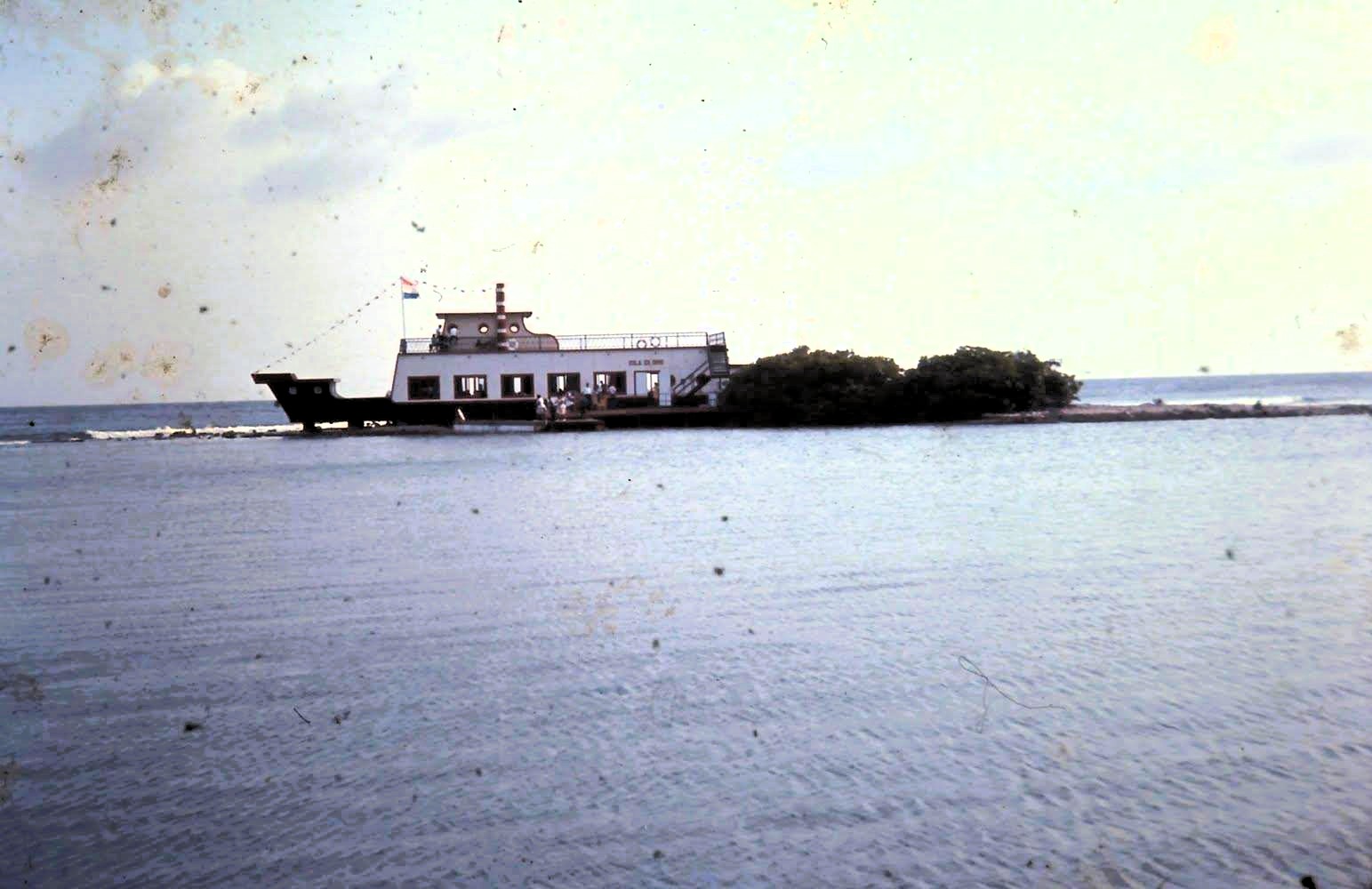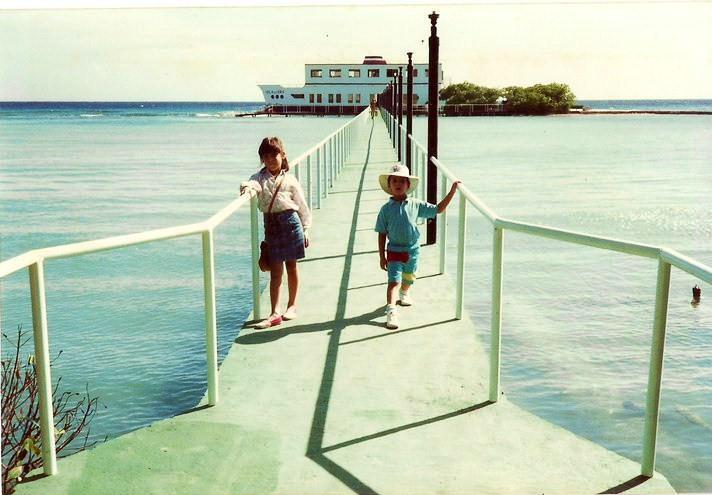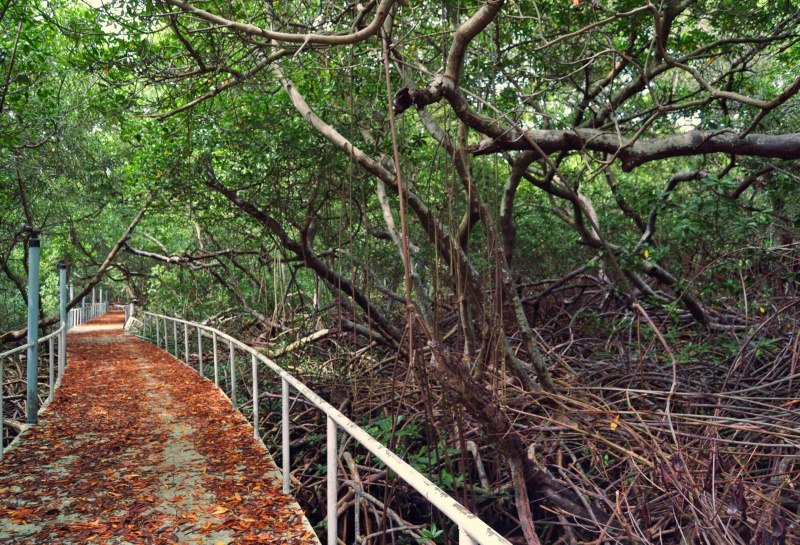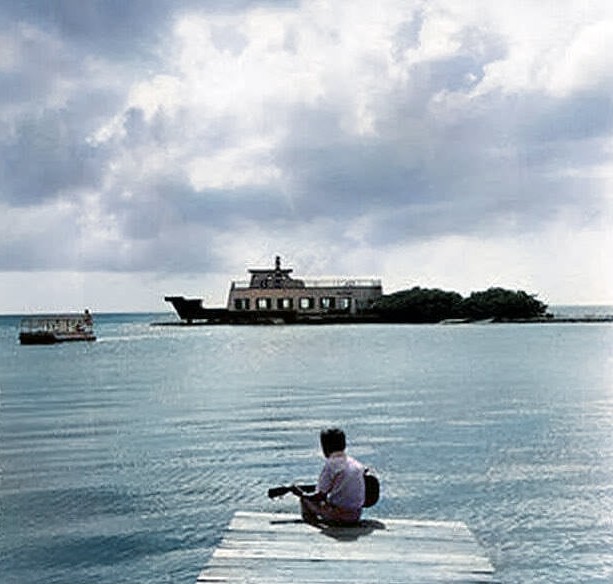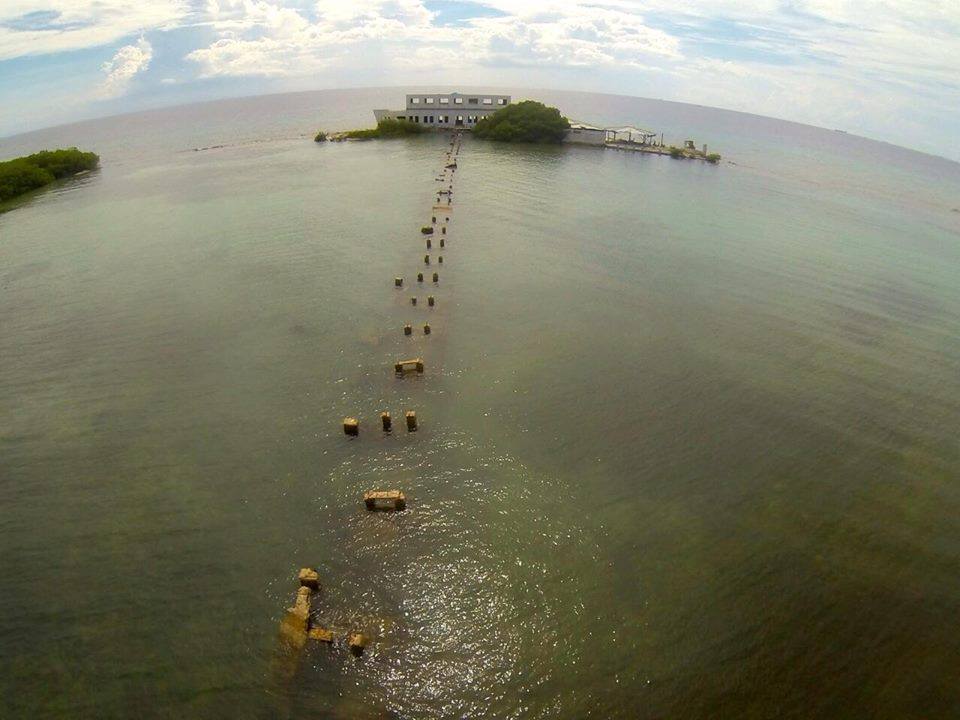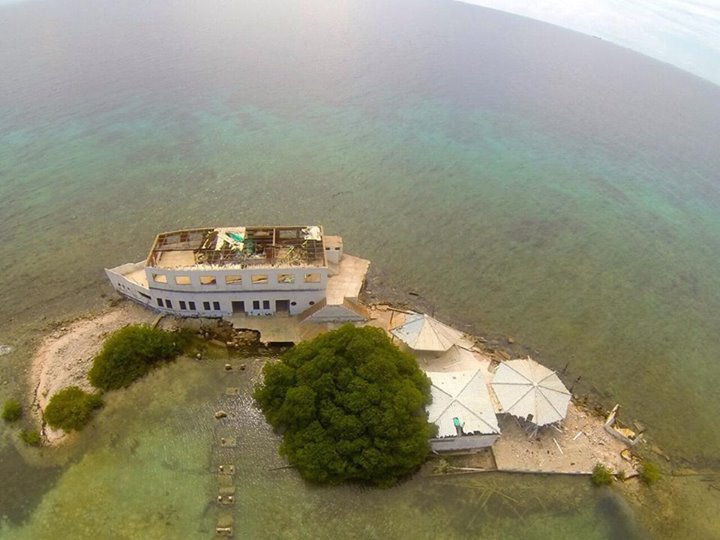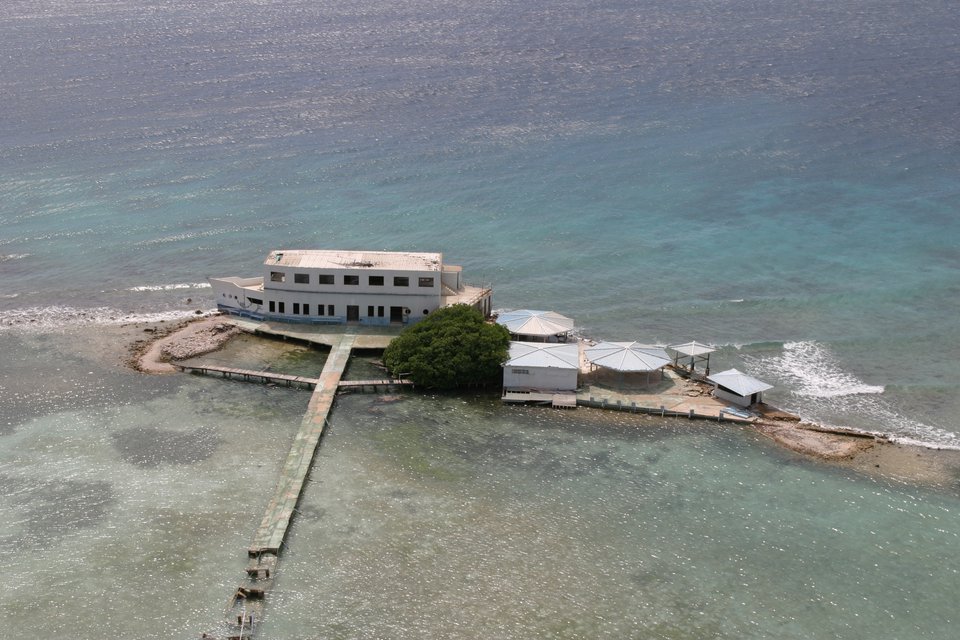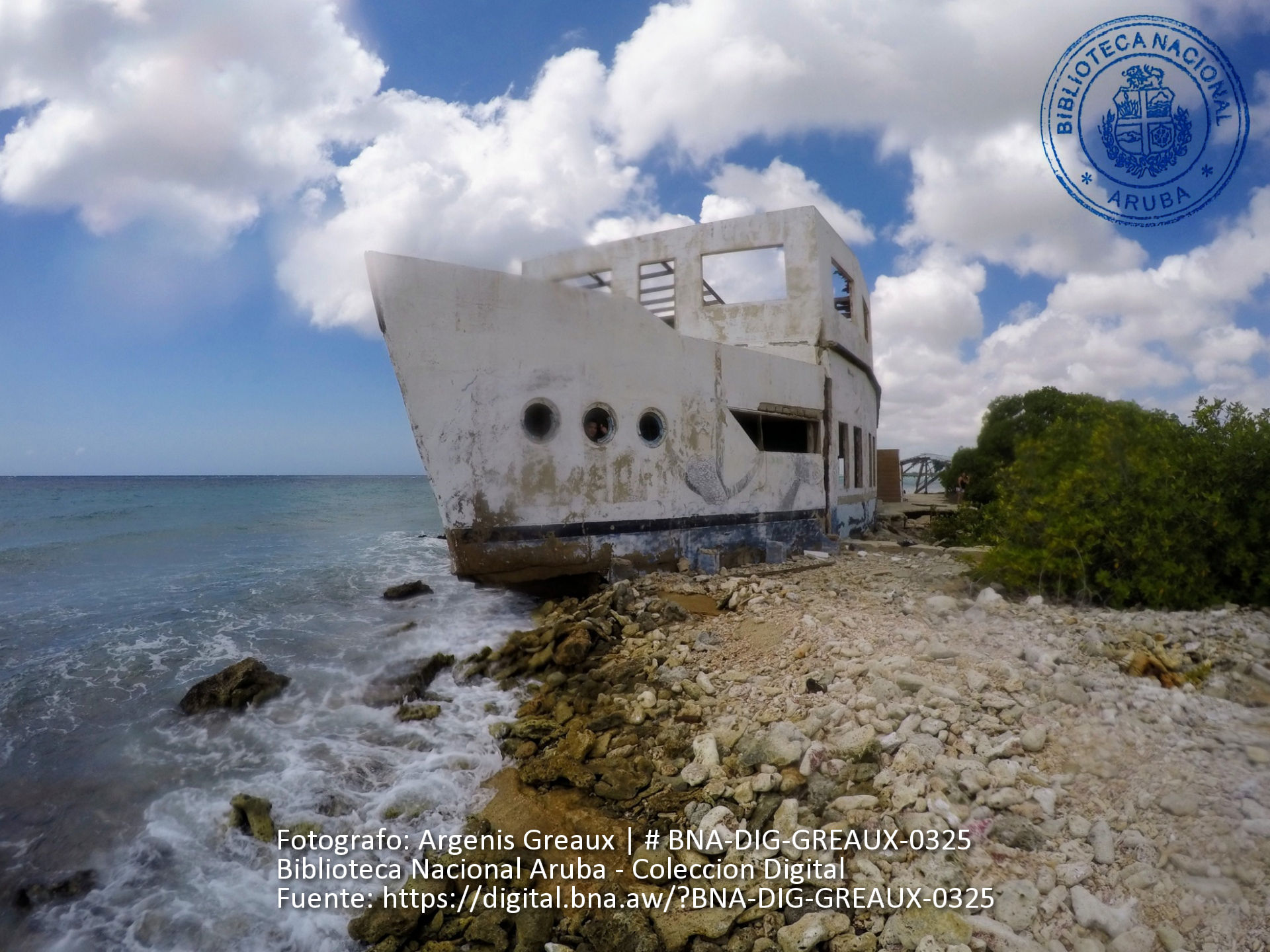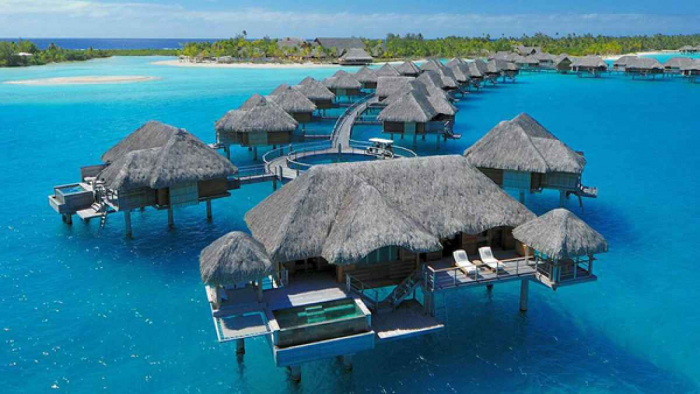| Location: | between Pos Chiquito and Savaneta |
| Period built: | 1962 – ’65 |
| Status: | abandoned, in ruins |
Isla di Oro * 1965
Category: Other Districts
Mr. Adolfo Oduber, owner of a welding shop in Pos Chiquito, made plans in 1959 to build a small bridge through the mangrove forest separating his house from the sea, allowing him to reach the seafront more quickly. This required cutting a 125-meter-long road through the mangrove forest, which was no easy task. Oduber who believed there was potential for attracting tourists, decided to build a wider bridge to the seafront. This was completed in March 1962.
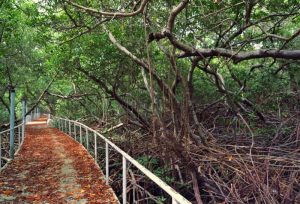
He then began work on constructing a boat-shaped building on the reef island, located about 150 meters offshore.
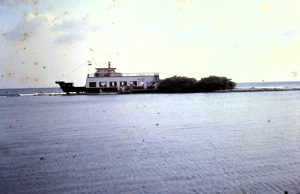
The deck of this boat would feature seating for tourists to relax and perhaps dance in the moonlight in the evening. A bar and snack bar would also be built on board. The total investment for this plan, once complete, would be 50,000 Antillian guilders. Along the 125-meter-long bridge, which was built at a height of over a meter, he planned to place several bird cages.
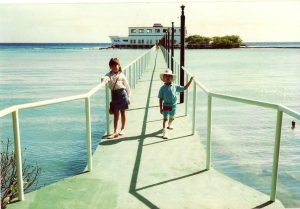
He began construction of the building on the island in May 1963. All materials had to be carried over the 125-meter-long bridge and to the island by a small raft.
He invited the Executive Council and the members of the Island Council to come and take a look.
In March of 1965, the Isla di Oro restaurant was opened by Governor Oscar Henriquez. The Executive Council decided to lend Mr. Oduber 25,000 guilders for the project.
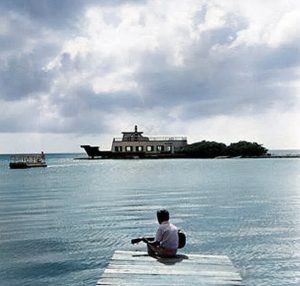
Within a very short period, Isla di Oro became a hub of activity with its parties featuring local and international bands.
Since its opening, the history of Isla di Oro has been one of a highly original idea for a restaurant/ship-on-a-reef, a project that repeatedly failed. Over the years, it changed owners and operators time after time, but its success proved elusive.
As the years passed, the site became less attractive and closed its doors.
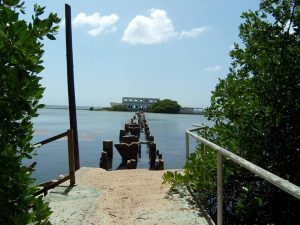
At the end of the 80s, maintenance and reconstruction of the building were carried out. Various activities took place at Isla di Oro, but it again lost popularity and interest and Isla di Oro closed. In the 90s, a group of investors wanted to build a hotel on Isla di Oro, but it never materialized.
In 1993, the lagoon near the then-dilapidated Isla di Oro was suggested as the location for the controversial Dolphin Beach project. Environmental organizations like Reef Divers Aruba and Accion Ambiental, however, fiercely opposed the project. Dredging the shallow water would be necessary to create sufficient depth for the dolphins, a move that would severely damage the local environment. The plans there were abandoned, and another location was sought. Ultimately, the project was never realized.
In 2016 Zoetry Isla Di Oro Aruba Resort was announced to be the first hotel in Aruba to feature over water bungalows. The 126-suite, all-inclusive resort was scheduled to open in 2018. Zoetry Resorts would be the first to build over water resorts in the Caribbean in the famous style known from Bali, Bora Bora or the Maldives.
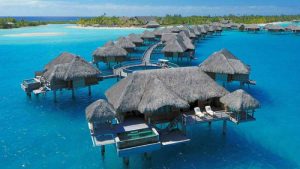
The minister of infrastructure received feedback from different non governmental organization (NGOs) that the location at Isla di Oro was not suitable for an over water bungalow resort. NGOs didn’t approve of the project, because of the negative impact it would have on the mangroves, marine life and the people living in the area of Isla di Oro.
Considering these points, the government denied the developers to continue. The project also didn’t fit the spatial planning program (ROP) introduced by the government.
The ruins of Isla di Oro are currently inaccessible due to the dilapidated state of the walkway.
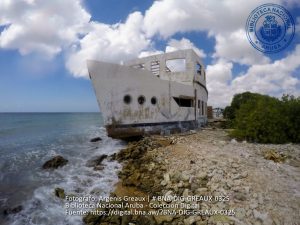
The mangroves area and the reef with the former Isla di Oro restaurant are now part of the Marine Protected Areas of the Arikok National Park.
.
